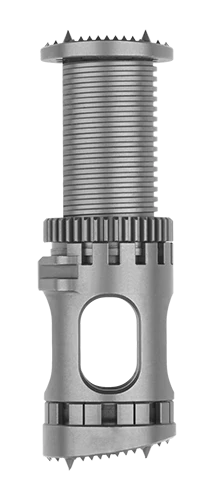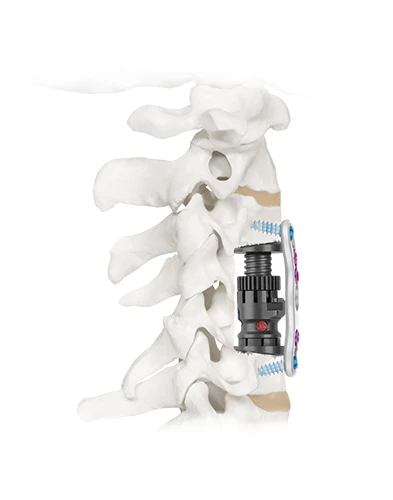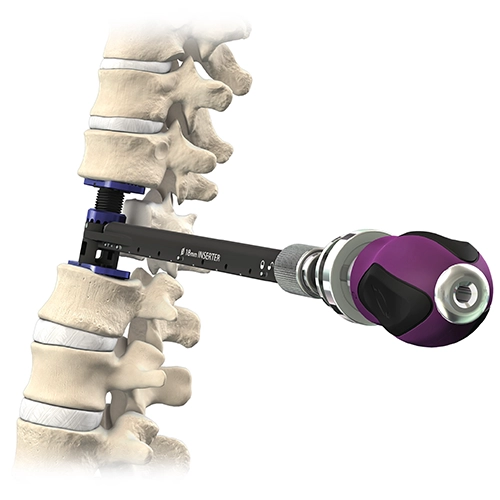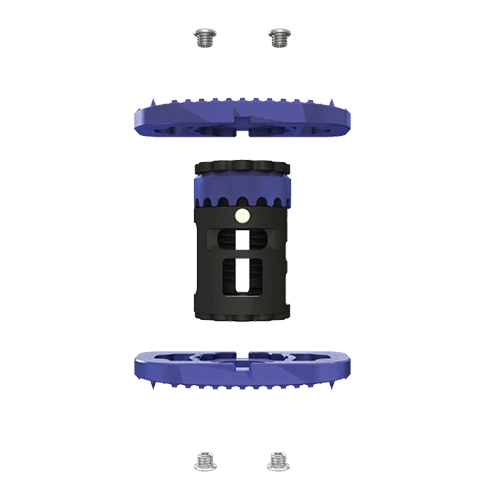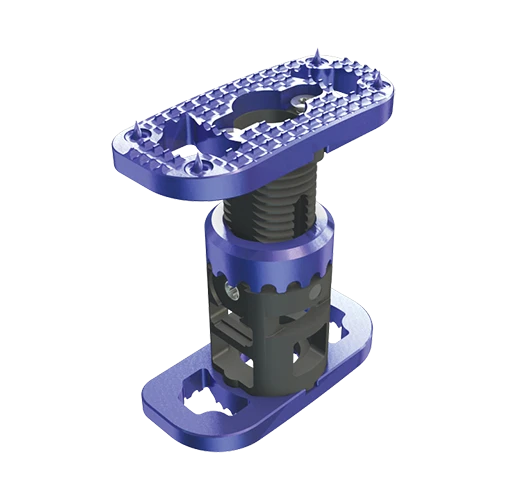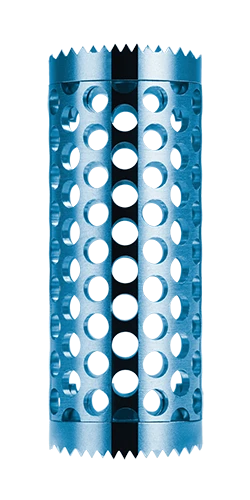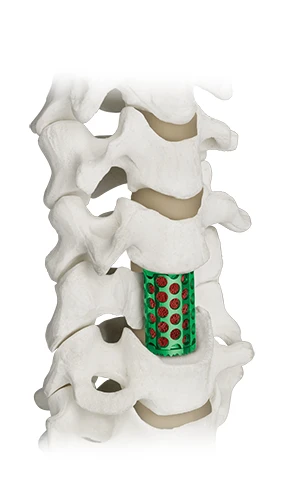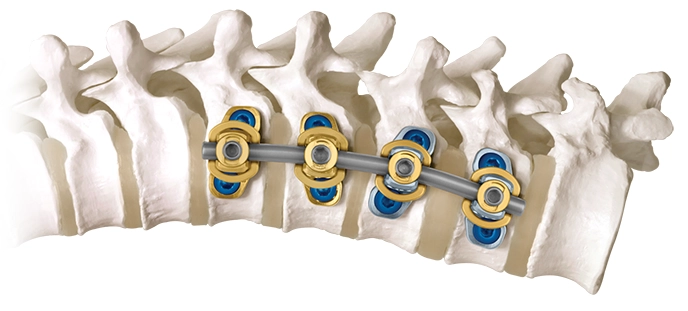Tumor and Trauma
Globus offers minimally invasive surgical solutions with seamlessly integrated instrument, implant, and fixation platforms for spinal tumor and trauma patients.
Vertebral Body Replacement Devices
Customization for Complex Cases
Expandable and static vertebral body replacement solutions enable customization for complex cases that require anterior column support and restoration of sagittal balance.
FORTIFY™
FORTIFY™ streamlines vertebral body replacement through one of several approaches and provides a range of implants designed to restore height, alignment, and stability. One-step insertion-expansion with automatic locking simplifies the technique. PEEK or titanium materials, maximized expansion ranges, and modular endplates allow surgeons to customize each implant for their patient.
COLOSSEUM™
COLOSSEUM™ is a titanium mesh vertebral body replacement spacer engineered to reduce procedural steps and streamline the static corpectomy procedure. Straight or curved spacers and a variety of endcap angulations are designed to accommodate varying patient anatomy and optimize fit.
Fixation
A Single Rod System with the Stability of a Plate
REVERE™ Anterior Integrated Staple System
The REVERE™ Anterior Integrated Staple System is a unique single rod (5.5mm) system that is ideal for multi-level anterior constructs to treat deformity, trauma, and tumor cases. The unique design of the staple, which combines the functionality of a traditional staple and screw head into one implant, coupled with multiple points of fixation, provides more rigidity than an anterior plating system while utilizing a single rod.
REVERE™ offers the following advantages:
- Single rod construct allows for less anatomical disruption than a dual rod system.
- Simpler rod contouring than with a dual rod anterior system
- May reduce fusion levels when compared to a posterior system3
- Provides more rigidity than an anterior thoracolumbar plate, due to the integrated staple and screw design4
Prioritizing Clinical Education
Over the past 20 years, we have evolved our programs in partnership with our renowned faculty. We provide learning experiences spanning online educational resources to surgeon-led didactic courses with hands-on training, mentorship opportunities, and field-based training support.
- Smith WD, Dakwar E, Le TV, Christian G, Serrano S, Uribe JS. Minimally invasive surgery for traumatic spinal pathologies: a mini-open, lateral approach in the thoracic and lumbar spine. Spine. 2010;35(26 Suppl):S338-S346.
- Pekmezci M, McDonald E, Kennedy A, et al. Can a novel rectangular footplate provide higher resistance to subsidence than circular footplates? An ex vivo biomechanical study. Spine. 2012;37(19):E1177-E1181.
- Lowe TG, Betz R, Lenke L, et al. Anterior single-rod instrumentation of the thoracic and lumbar spine: saving levels. Spine. 2003;28(20):S208-S216.
- Data on file

